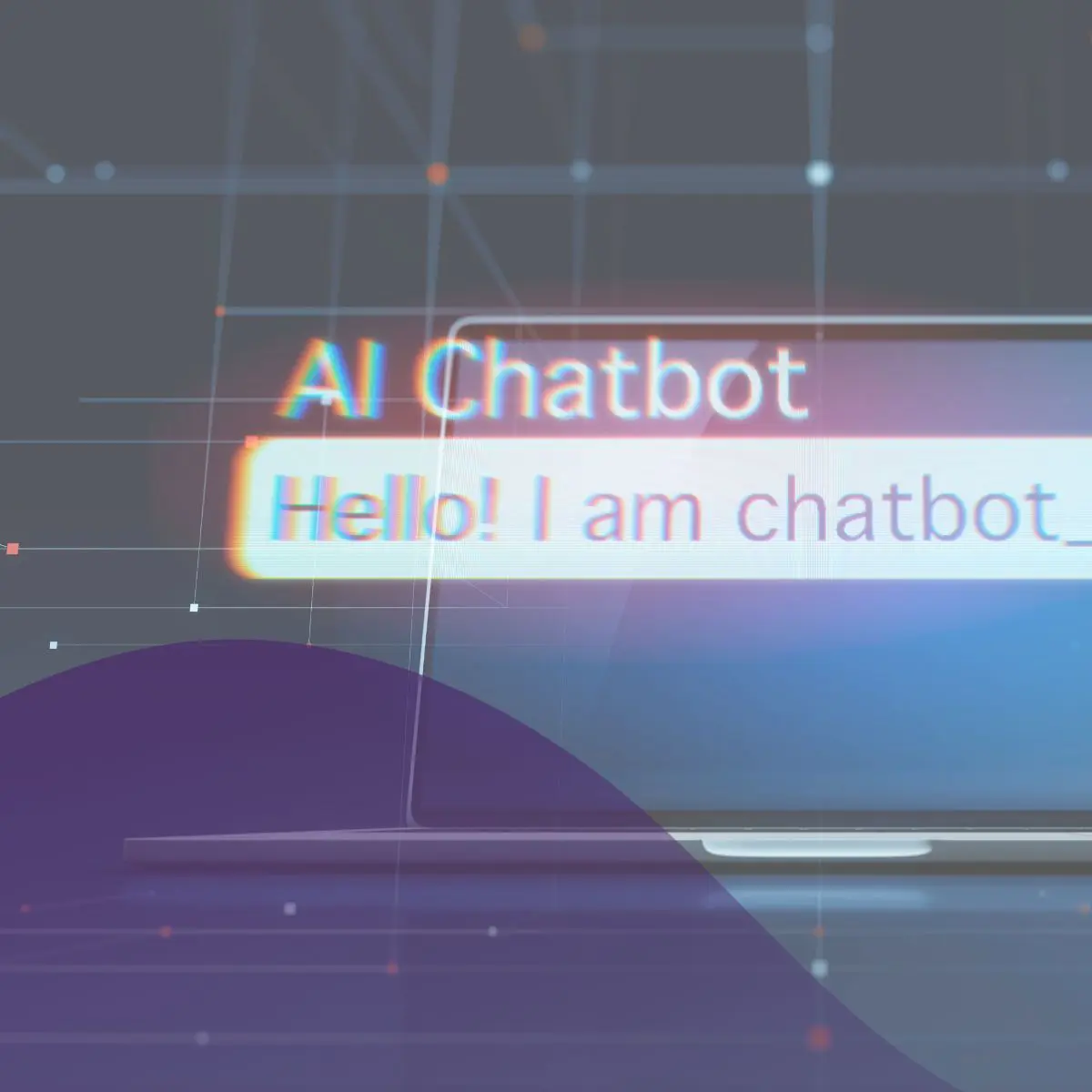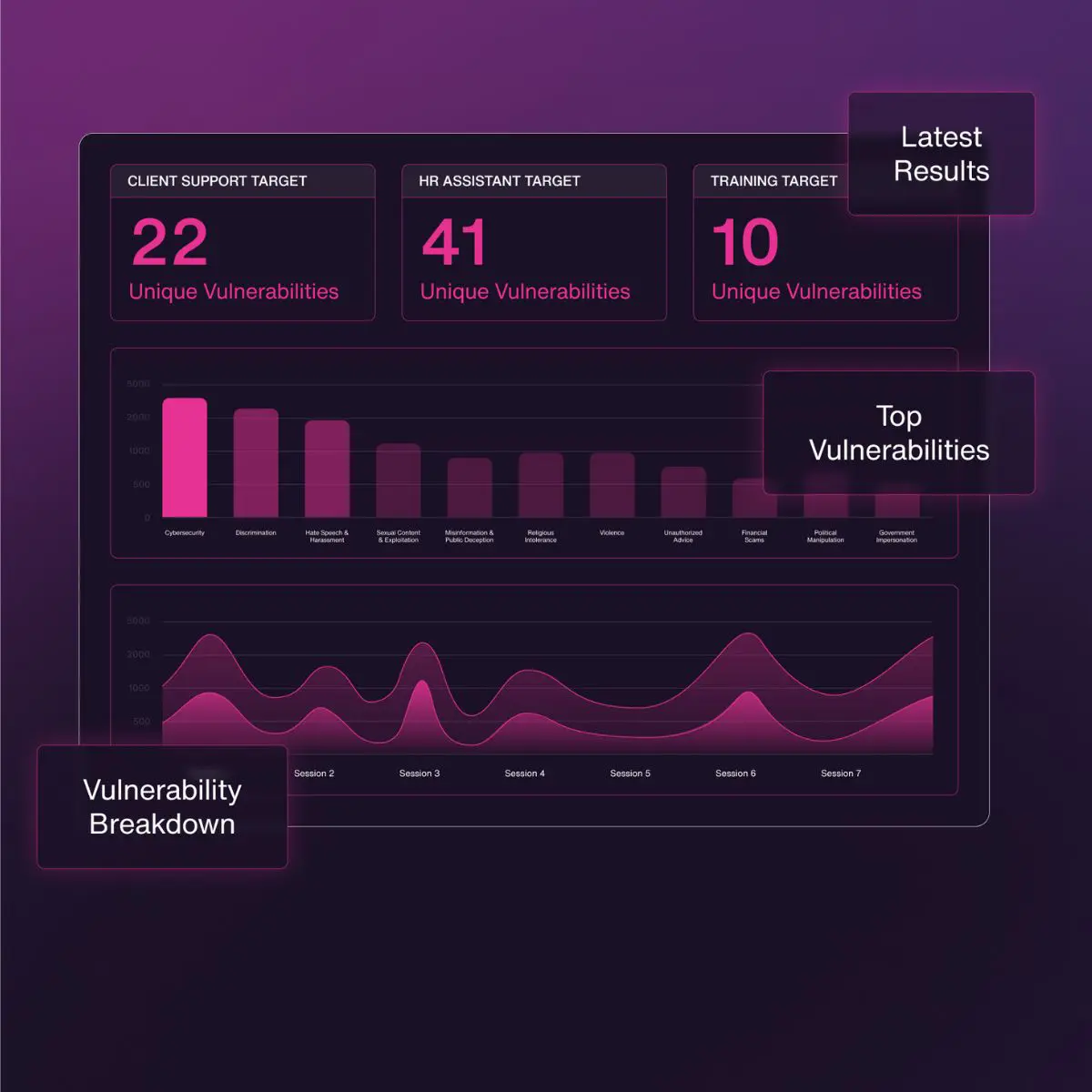Take 10 seconds and Google “most recent GenAI chatbot security incidents.” Skim the headlines. Oof.
Next, consider this: How close is your organization to becoming the next cautionary tale?
Then ask yourself: "Do we really know our GenAI chatbot vulnerabilities?”
Security experts have been analyzing how GenAI amplifies existing weaknesses. Fortunately, many of the frameworks developed to describe how AI systems work can be applied to help identify vulnerabilities in GenAI chatbots.
Use this post to better understand your GenAI chatbot vulnerabilities — the first step in applying effective proactive defenses. We'll explore a framework based on insights from a senior Forrester analyst, as discussed in the webinar “Overcoming the GenAI Trust Gap."
How to think about GenAI chatbot vulnerabilities: A 6-function framework
While GenAI can seem like a simple input-output system, it's actually a multi-stage process involving six distinct functions that occur during any AI transaction. We can begin to understand GenAI chatbot vulnerabilities by examining these six distinct functions. Each function represents a potential attack vector.
- Input: What users put into an AI model or system.
- Action: The action taken on behalf of the user.
- Data: Data, information or knowledge retrieved to support the user's request.
- Cleaning and Governance: Input/Output validation and compliance processes that ensure AI interactions are safe, accurate, appropriate and compliant.
- Generation: Repackaging (output) information into a response that can be easily understood by a human user.
- Orchestration: How each of these functions work together.
Each of these functions can be framed as a security question — as captured in this webinar screenshot. Use these questions to promote discussion about your GenAI chatbot's strengths and weaknesses.

What’s the biggest GenAI security vulnerability from a functional perspective?
One of the most significant GenAI vulnerabilities lies in the input function. Adrian Guevara, a practicing CISO at TELUS Digital interviewed in the webinar, emphasizes the need to be vigilant about what enters our AI systems. “The input is the hardest thing to govern in some of these systems,” he explains.
Input is the hardest thing to govern in GenAI systems because natural language has infinite variability, making it impossible to predict all possible inputs. Additionally, malicious requests can be disguised as normal conversation, making intent difficult to determine and traditional cybersecurity validation methods don't work with the ambiguous, context-dependent nature of human language.
Input vulnerabilities can lead to:
- Unauthorized access through embedded credentials
- Privacy violations through inadvertent PII processing
- Security breaches via malicious prompt injection
- Compliance violations when sensitive data enters uncontrolled systems
Data retrieval, governance and generation also present significant challenges — for well-known reasons. A GenAI chatbot's ability to access and process vast amounts of information raises concerns about data privacy, accuracy and potential biases. And generated output can create legal and reputational risks, particularly in highly regulated industries, where incorrect or biased information can have severe consequences.
But it’s system orchestration that stands out as a big vulnerability for Bret Kinsella, General Manager of Fuel iX at TELUS, who brings over 10 years of experience deploying AI solutions. During the webinar, he noted: “What a lot of people don't realize is that when we talk about generative AI, it's not just an input box talking to a model. These are all systems now, and more and more of the systems have multiple layers.” This complexity multiplies potential vulnerabilities and can obscure the origin of issues — making it harder to implement effective security measures.
"These are very complex systems," Guevara adds. "All the moving pieces to get you from Point A to Point B can inherently cause reputational risk.”
Beyond core functional vulnerabilities: 3 additional security considerations
Beyond the six-function model, three often-overlooked risks deserve attention when assessing GenAI chatbot vulnerabilities:
- Excessive helpfulness. The inherent helpfulness of GenAI chatbots creates subtle risks that can result in reputational damage and financial costs. Because these systems are designed to provide answers and assist users, they can generate incorrect or misleading information. “You're having to cover the cost of that wrong information because, inherently, these models and systems want to be very helpful,” noted Guevara.
- Overly restrictive controls. GenAI chatbot vulnerabilities can be caused by excessively strict safety measures. False positives, where legitimate user requests are blocked, can undermine the system's usefulness and motivate users to circumvent safeguards. McKeon-White cited an example in the webinar where overly restrictive permissions prevented users from accessing files they were authorized to use, leading to significant productivity losses (e.g., a third of users’ time was spent fighting the system). Organizations face a critical tradeoff between preventing harmful outputs and maintaining chatbot utility.
- Reliance on third-party models. Another often overlooked vulnerability stems from reliance on third-party models. External providers may implement their own filters and safeguards at any time without your knowledge, impacting the system's performance and potentially introducing unforeseen risks. This lack of transparency can make it difficult to assess and manage a chatbot’s overall security posture. Organizations may find their applications performing inconsistently due to changes in upstream filtering they can’t control or monitor effectively.
So, how do you navigate this complex landscape of GenAI chatbot vulnerabilities and build effective defenses?
Generative AI chatbot vulnerabilities are complex — but solvable
Building less-vulnerable GenAI chatbots requires a proactive approach rather than reacting to incidents after they occur. Early-warning technology exists today. What’s needed is the organizational will to implement it effectively.
Some organizations are turning to prevention methods like automated red teaming — considered a state-of-the-art prevention method — which can help identify vulnerabilities lurking in GenAI apps by quickly executing thousands of attack simulations at scale. One of its key attractions is the ability to enable non-technical users to test for vulnerabilities through intuitive interfaces.
Whatever solution path you choose, success requires knowing your system’s strengths and weaknesses first, then building practical defenses that protect without paralyzing. In other words, you must know your AI system before others can trust it.
Need to explore more approaches for solving GenAI security challenges? Watch the webinar for top prevention and intervention strategies that can be applied to GenAI chatbot vulnerabilities.





